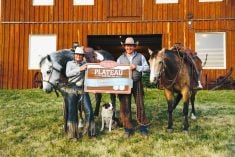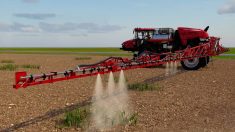The last few years has seen the Alberta government working through a laborious process to create long-term development plans for specific watershed areas of the province. The idea is to establish a governing process that will oversee how resources such as agriculture, ranching, energy, recreation, transportation, conservation, tourism and others will develop in the various regions.
It’s a necessary process for all sectors involved both for their development and protection. It’s not just a technical process, but involves regional economics and of course politics and vested interests. The latter is always disconcerting because city-based lobby groups will be quick to expand their influence over the outcome. Those groups also represent a large voter base that puts the much smaller farming and ranching community at a political disadvantage.
Read Also

Guarding against misinformation: Do you believe in house hippos?
Misinformation and disinformation run rampant in today’s digital age. Farmers must be wary of the digital dangers and know how to keep themselves safe.
The planning is a long-term process that can drag out for years, with draft plans, public consultations, revised plans, legislation and finally implementation.
The first plan out the gate was the Lower Athabasca Regional Plan. That area received priority simply because it involved the major economic driver in the province — the oilsands. Clearly the government wanted to make sure it was going to protect the development of that titanic asset over any other concerns. That rush to get that plan into place saw agriculture, which is a significant player in the southern end of the plan’s region, virtually ignored. That oversight was acknowledged, but it still does not seem to have been adequately addressed.
The next plan to be released was the draft South Saskatchewan Regional Plan (SSRP). Unlike the Lower Athabasca plan, agriculture and ranching could not be ignored, as they contribute billions to the economy of southern Alberta.
However, considering its huge contribution and the obvious large physical presence of commercial agriculture and ranching in the entire area, its development vision within the draft SSRP document was downplayed. Most of the other sectors reviewed had suggestions and recommendations for some sort of developmental action. For instance new parks and protected areas are to be expanded, tourism and recreation are to be developed, and more environmental conservation is to be pursued.
Those may be admirable development goals, but they are not the main economic drivers of the southern region. The energy sector is addressed in the plan, but it is a mature sector in that area and the industry just wants to maintain its access rights and the status quo. It’s the commercial and irrigation agriculture which receive short shift in the plan. It’s as if the elephant in the room was being ignored as the authors of the document laid out the direction that they wanted for the region, which did not reflect the agricultural economic reality.
To be fair, livestock grazing in the green and white areas was reviewed, but more from a grassland conservation perspective than an economic opportunity. The document recognized the role grazing plays in preserving the ecosystem, but failed to recommend ways to stop the loss of grasslands by brush and noxious weed encroachment. In many foothill areas that has seen 30 per cent of the grazing land lost since the 1900s. It’s curious that in a document that wants action taken to preserve more parks, riparian areas and headwaters it makes no mention of conserving and renovating grasslands to their original condition.
The SSRP does make some reference to the elephant — the role of irrigation in commercial agriculture. However, the tone tends to be one of looking at it as a relic from past development of the area. Incredibly an SSRP suggestion is that farmers’ markets be expanded, that’s a rather naive perspective for a local ag economy that is dominated by multimillion-dollar commercial operations growing and processing vast tonnages of food products.
There is not a word about significantly expanding irrigation to pursue further development of commercial agriculture. Reference tends more towards increasing the efficiencies of existing irrigation infrastructure and practices. Well that is already occurring, the industry has seen a whopping increase of 19 per cent in water use efficiency over the past few years. Water pipelines are replacing many feeder canals and low pressure pivots are in widespread use. That all helps with water conservation and has seen some small incremental expansion, but it doesn’t open up 10,000 acres of new land to irrigation development. A few years ago the provincial government blocked the development of Crown land for a large irrigated potato operation. That would indicate that this government will not allow any further such large-scale irrigated agriculture development, the draft SSRP seems to reflect that government attitude.
It would seem that the direction of this plan reflects an urban-centric perspective of resource conservation and recreation development with undertones of political correctness. For instance, consultation with First Nations about land development is stated (many times) as a main criteria in any future implementation of the plan. Although such consultation may have interesting historical impact perspectives, it should not be an attempt to thwart development. Considering treaties were signed over 100 years ago, such consultations seem at the least a bit late.
Lobby group perspectives as expected are varied. Conservation and green groups feel the plan is short sighted and want even more parks and protected areas. Some off-road recreation groups feel their access to the backcountry will be restricted. Hunting and fishing groups are concerned about access. Cities and towns will want their water sources protected and expanded. With those kinds of perspectives looming in the background, perhaps the best commercial agriculture and ranching can hope for in these resource development plans is to be ignored and be allowed to carry on business as usual.














